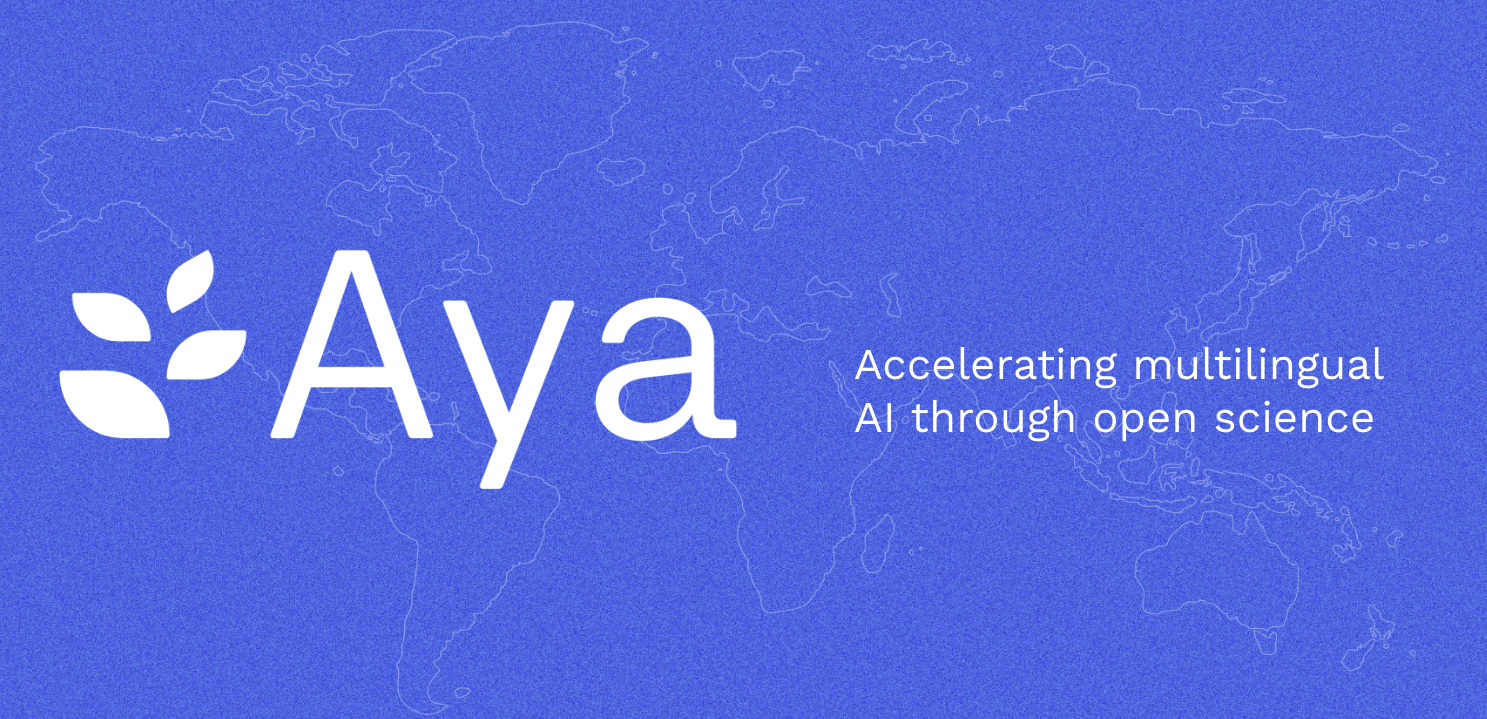dataset_info:
features:
- name: inputs
dtype: string
- name: targets
dtype: string
- name: language
dtype: string
- name: language_code
dtype: string
- name: annotation_type
dtype: string
- name: user_id
dtype: string
splits:
- name: train
num_bytes: 1990086
num_examples: 4909
download_size: 981588
dataset_size: 1990086
configs:
- config_name: default
data_files:
- split: train
path: data/train-*
license: apache-2.0
task_categories:
- question-answering
- translation
- summarization
- zero-shot-classification
language:
- zh
pretty_name: Traditional_Chinese-aya_dataset
size_categories:
- 1M<n<10M
資料集描述
繁體中文 Aya (Traditional Chinese Aya Chinese;TCA):專注於繁體中文處理的 Aya 集合的精選子集
概述
繁體中文 Aya 是一個精心策劃的資料集,源自 CohereForAI 的綜合 Aya 集合,特別關注繁體中文文本資料。
此資料集結合了來自 CohereForAI/aya_dataset,過濾掉除繁體中文、簡體中文內容之外的所有內容。
目標
繁體中文 Aya 的目標是為研究人員、技術專家和語言學家提供即用型繁體中文文本資源,顯著減少專注於繁體中文的 NLP 和 AI 專案中數據預處理所需的時間和精力。
資料集來源與資訊
- 資料來源: 從 CohereForAI/aya_dataset 2 個子集而來。
- 語言: 繁體中文、簡體中文('zho')
- 應用: 非常適合語言建模、文本分類、情感分析、和機器翻譯等任務。
- 論文連結: 2402.06619
- 維護人: Heng666
- License: Apache-2.0
使用方法
此資料集是開始繁體中文語言專案(從學術研究到商業應用)的基礎工具。
透過提供預先過濾的繁體中文文本來源,繁體中文 Aya 讓研究人員、技術專家和開發人員能夠直接進行模型訓練、分析和應用程式開發,而無需進行資料清理和語言過濾的初步麻煩。
展示範例
from datasets import load_dataset
dataset = load_dataset("Heng666/Traditional_Chinese-aya_dataset", "default")
在上面的程式碼片段中,「aya_dataset」指的是原始 「aya_dataset」中「default」子集的繁體中文版本。 您可以透過在載入資料集時指定其名稱來載入其他子集。
訪問和貢獻
可在 Heng666/Traditional_Chinese-aya_dataset 下的 Hugging Face Hub 上獲取,
繁體中文 Aya 邀請社區做出貢獻。鼓勵用戶提供回饋、提出改進建議。
支持與合作
我們致力於圍繞繁體中文人工智慧和 NLP 研究創造一個包容和支持的環境。如需支援、協作或有關資料集的疑問,請透過 Hugging Face Hub 的討論部分進行聯絡。
Original Dataset Card of Aya by CohereForAI
Dataset Summary
The Aya Dataset is a multilingual instruction fine-tuning dataset curated by an open-science community via Aya Annotation Platform from Cohere For AI. The dataset contains a total of 204k human-annotated prompt-completion pairs along with the demographics data of the annotators.
This dataset can be used to train, finetune, and evaluate multilingual LLMs.
Curated by: Contributors of Aya Open Science Intiative.
Language(s): 65 languages (71 including dialects & scripts).
License: Apache 2.0
Aya Datasets Family:
Name Explanation aya_dataset Human-annotated multilingual instruction finetuning dataset, comprising over 204K instances across 65 languages. aya_collection Created by applying instruction-style templates from fluent speakers to 44 datasets, including translations of 19 instruction-style datasets into 101 languages, providing 513M instances for various tasks. aya_evaluation_suite A diverse evaluation set for multilingual open-ended generation, featuring 250 culturally grounded prompts in 7 languages, 200 translated prompts in 24 languages, and human-edited versions selected for cross-cultural relevance from English Dolly in 6 languages.
Dataset
The Aya Dataset comprises of two types of data:
- Human Annotations: Original annotations (brand new prompts and completions written by annotators) and re-annotations (human edits of automatically generated prompts and completions).
- Demographics Data: Anonymized information for each annotator.
Load with Datasets
To load this dataset consisting of both prompt-completions and demographics data with datasets, you'll just need to install Datasets as pip install datasets --upgrade and then use the following code:
from datasets import load_dataset
# Load the annotations dataset
aya_dataset = load_dataset("CohereForAI/aya_dataset")
# Load the demographics dataset
aya_demographics = load_dataset("CohereForAI/aya_dataset", "demographics")
Data Fields
Human Annotations (Default)
The data fields are the same among all splits:
inputs: Prompt or input to the language model.targets: Completion or output of the language model.language: The language of theinputsandtargets.language_code: The ISO code for the language of theinputsandtargets.annotation_type: The value denoting whetherinputsandtargetsare 'original_annotations' or 're-annotations'.user_id: Unique identifier of the annotator who submitted the prompt-completion pair.
Demographics Data
The data fields are the same among all splits:
user_id: Unique identifier of the annotator who submitted the prompt-completion pair.age_range: Age of the annotator. Ranges from 0 to 121.gender: Gender of the annotator. The values are 'male', 'female', 'prefer not to say', 'non-binary' and 'others'.languages: List of languages spoken by the annotator.dialects: Dialects reported by the annotator.
Some empty values may be represented as 'null'.
Data Splits
Human Annotations (Default)
The following are the splits of the data:
| Split | No. of instances | Language Coverage |
|---|---|---|
| train | 202,364 | All |
| test | 1,750 | 7 ('Standard Arabic', 'Yoruba', 'Turkish', 'English', 'Simplified Chinese', 'Portuguese', 'Telugu') |
Demographics Data
The following are the splits of the data:
| Split | No. of Instances |
|---|---|
| train | 1,456 |
Data Instances
Human Annotations (Default)
An example of train looks as follows:
{
"inputs": "What cultural events or festivals add vibrancy to Colombo's calendar...",
"targets": "Colombo's cultural calendar is adorned with diverse events and festivals that celebrate the city's rich tapestry of traditions...",
"language": "English",
"language_code": "eng",
"annotation_type": "original-annotations",
"user_id": "f0ff69570af705b75c5a0851883e..."
}
Demographics Data
An example of train looks as follows:
{
"user_id": "f0ff69570af705b75c5a0851883e...",
"age_range": [ 25, 35 ],
"gender": "female",
"languages": [ "English", "Hausa" ],
"dialects": [ "Hausa" ]
}
Statistics
Annotation Types
The following is the breakdown of original annotations and re-annotations in the final dataset.
| Type of Annotation | Instances |
|---|---|
| Original Annotations | 138,844 |
| Re-Annotations | 65,270 |
| Total | 204,114 |
Languages
The dataset covers 65 languages: 28 high-resource, 12 mid-resource, and 31 low-resource languages. The following is details about the languages, dialects & scripts included in the dataset.
Languages Info
| ISO Code | Language | Resources |
|---|---|---|
amh |
Amharic | Low |
arb, ary, ars, acq, arz & apc |
Arabic (Standard, Moroccan, Najdi, Ta'izzi-Adeni, Egyptian & South Levantine) | High |
ben |
Bengali | Mid |
ceb |
Cebuano | Mid |
dan |
Danish | Mid |
deu |
German | High |
ell |
Greek | Mid |
eng |
English | High |
eus |
Basque | High |
fil |
Filipino | Mid |
fin |
Finnish | Mid |
fra |
French | High |
gle |
Irish | Low |
guj |
Gujarati | Low |
hat |
Haitian Creole | Low |
hau |
Hausa | Low |
hin |
Hindi | High |
hun |
Hungarian | High |
ibo |
Igbo | Low |
ind |
Indonesian | Mid |
ita |
Italian | High |
jav |
Javanese | Low |
jpn |
Japanese | High |
kan |
Kannada | Low |
kir |
Kyrgyz | Low |
kor |
Korean | Mid |
kur |
Kurdish | Low |
lit |
Lithuanian | Mid |
mal |
Malayalam | Low |
mar |
Marathi | Low |
mlg |
Malagasy | Low |
msa |
Malay | Mid |
mya |
Burmese | Low |
nep |
Nepali | Low |
nld |
Dutch | High |
nso |
Northern Sotho | Low |
nya |
Chichewa | Low |
pan |
Punjabi | Low |
pes |
Persian | High |
pol |
Polish | High |
por |
Portuguese | High |
pus |
Pashto | Low |
rus |
Russian | High |
sin |
Sinhala | Low |
sna |
Shona | Low |
snd |
Sindhi | Low |
som |
Somali | Low |
spa |
Spanish | High |
sqi |
Albanian | Low |
srp |
Serbian | High |
sun |
Sundanese | Low |
swa |
Swahili | Low |
swe |
Swedish | High |
tam |
Tamil | Mid |
tel |
Telugu | Low |
tha |
Thai | Mid |
tur |
Turkish | High |
ukr |
Ukrainian | Mid |
urd |
Urdu | Mid |
vie |
Vietnamese | High |
wol |
Wolof | Low |
xho |
Xhosa | Low |
yor |
Yorùbá | Low |
zho |
Chinese (Traditional & Simplified) | High |
zul |
Zulu | Low |
Motivations & Intentions
- Curation Rationale: The curation effort employed an open-science approach to create a diverse instruction-style dataset through annotators across the globe that ensures comprehensive representation across all languages. The success of the curation effort, led by volunteers across diverse backgrounds, was significantly influenced by their hope to meaningfully bring NLP advancements to their languages.
Known Limitations
- Language and dialect coverage: The dataset covers a limited fraction of the world's linguistic diversity, with 93% of languages not represented, facing challenges in distinguishing between languages and dialects, lacking coverage for many regional dialects, and excluding programming languages.
- Uneven distribution of contributions: The dataset contains contributions in annotation activities, with a 'long tail' of annotators making only one or two contributions, leading to potential dataset imbalances across languages and a lack of diversity within certain language annotations.
- Cultural and Personal Bias: In the dataset, certain languages have limited representation due to a few dominant annotators, potentially leading to a narrow viewpoint and skewed distribution of content, particularly towards certain domains like news.
- Gendered Pronouns: Many of the languages in the Aya Dataset only contain pronouns that are explicitly gendered (e.g., Arabic) or that lack gender-neutral third-person pronouns for gender-neutral reference (e.g. Estonian).
- Formality Distinctions: The dataset encompasses languages with diverse formality distinctions, involving honorifics and situational choices in pronoun use, reflecting varying levels of standardization influenced by regional, cultural, and identity factors.
- Toxic or Offensive Speech: The Aya Annotation Platform lacked specific flags for toxic speech, relying on human verification and peer review to mitigate offensive content, but there's no guarantee that all potentially offensive data points were removed during the annotation process.
- Accounting for mislabeled data: The Aya Annotation Platform lacks re-labeling capabilities, leading to potential mislabeled data in the Aya Dataset, including instances of incorrect language assignments and non-compliance with instruction-style formatting.
Additional Information
Provenance
- Methods Used: Crowd-sourced through volunteer annotations, followed by a quality assessment phase in which samples from the dataset were checked.
- Methodology Details:
- Source: Original annotations and edits of opensource NLP datasets
- Platform: Aya Annotation Platform
- Dates of Collection: May 2023 - Dec 2023
Dataset Version and Maintenance
- Maintenance Status: Actively Maintained
- Version Details:
- Current version: 1.0
- Last Update: 02/2024
- First Release: 02/2024
- Maintenance Plan: Updates will be periodically made available based on volunteer contributions.
Authorship
- Publishing Organization: Cohere For AI
- Industry Type: Not-for-profit - Tech
- Contact Details: https://aya.for.ai/
Licensing Information
This dataset can be used for any purpose, whether academic or commercial, under the terms of the Apache 2.0 License.
Citation Information
@misc{singh2024aya,
title={Aya Dataset: An Open-Access Collection for Multilingual Instruction Tuning},
author={Shivalika Singh and Freddie Vargus and Daniel Dsouza and Börje F. Karlsson and Abinaya Mahendiran and Wei-Yin Ko and Herumb Shandilya and Jay Patel and Deividas Mataciunas and Laura OMahony and Mike Zhang and Ramith Hettiarachchi and Joseph Wilson and Marina Machado and Luisa Souza Moura and Dominik Krzemiński and Hakimeh Fadaei and Irem Ergün and Ifeoma Okoh and Aisha Alaagib and Oshan Mudannayake and Zaid Alyafeai and Vu Minh Chien and Sebastian Ruder and Surya Guthikonda and Emad A. Alghamdi and Sebastian Gehrmann and Niklas Muennighoff and Max Bartolo and Julia Kreutzer and Ahmet Üstün and Marzieh Fadaee and Sara Hooker},
year={2024},
eprint={2402.06619},
archivePrefix={arXiv},
primaryClass={cs.CL}
}

